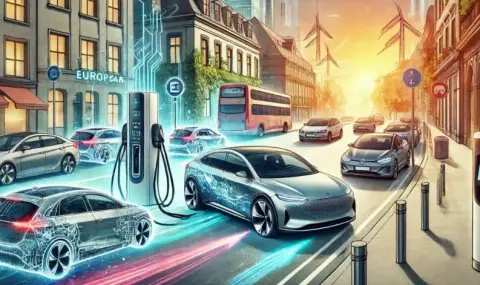In 2024, the European automotive market showed modest growth amid significant changes in the sales structure. Hybrid vehicles (HEVs) are increasingly overtaking gasoline vehicles in popularity, while electric vehicles, although they retain the third position in the popularity ranking, recorded a serious decline in sales compared to the previous year.
According to data from the European Automobile Manufacturers' Association (ACEA), the EU automotive market ended 2024 with a small but positive result. The total number of new passenger car registrations increased by 0.8% to 10.6 million units. At the same time, the situation in different countries is heterogeneous: Spain showed significant growth of 7.1%, while other major markets experienced a decline - France (-3.2%), Germany (-1%) and Italy (-0.5%). The largest growth was recorded by Poland (16.1%).
The second position, surprisingly or not, is for Bulgaria, which has a 13.9% growth and 42,941 cars sold. Last year, 32,818 new gasoline cars were sold in Bulgaria, which is a 14.5% growth. The increase in diesel cars is similar - 13.9%, with 6,986 new diesels sold. This is not the case with electric cars. Like almost all countries in Europe, there is a serious decline in interest in electric cars in our country. In percentage terms, in Bulgaria it is 11.6 less than a year earlier. Last year, a little over 1,500 electric cars were sold in our country.
Particularly interesting changes occur in the structure of power units. Fully electric vehicles (BEVs) had a market share of 13.6% in the EU for the year. This surpassed the share of diesel cars, which fell to 11.9%. However, in December 2024, the number of electric vehicle registrations fell by a further 10.2%, mainly due to significant declines in Germany (-38.6%) and France (-20.7%).
The real winner in 2024 was hybrid electric vehicles (HEVs), which consistently overtook petrol cars in popularity in the last four months of the year. Their market share increased to 33.6% in December, compared to 26.5% the previous year. Petrol cars, while still the largest part of the EU market with an annual share of 33.3%, saw registrations fall by 1.8% in December.
Instead, HEVs finished last year in second place with a share of around 31%. However, we must clarify that the majority of HEV hybrids are gasoline or diesel cars with a 48-volt starter generator and are almost identical to standard cars with internal combustion engines and are quite different from the so-called plug-in hybrids, which are charged from the electrical grid and which, like electric vehicles, saw a decline in interest in them at the end of last year.
